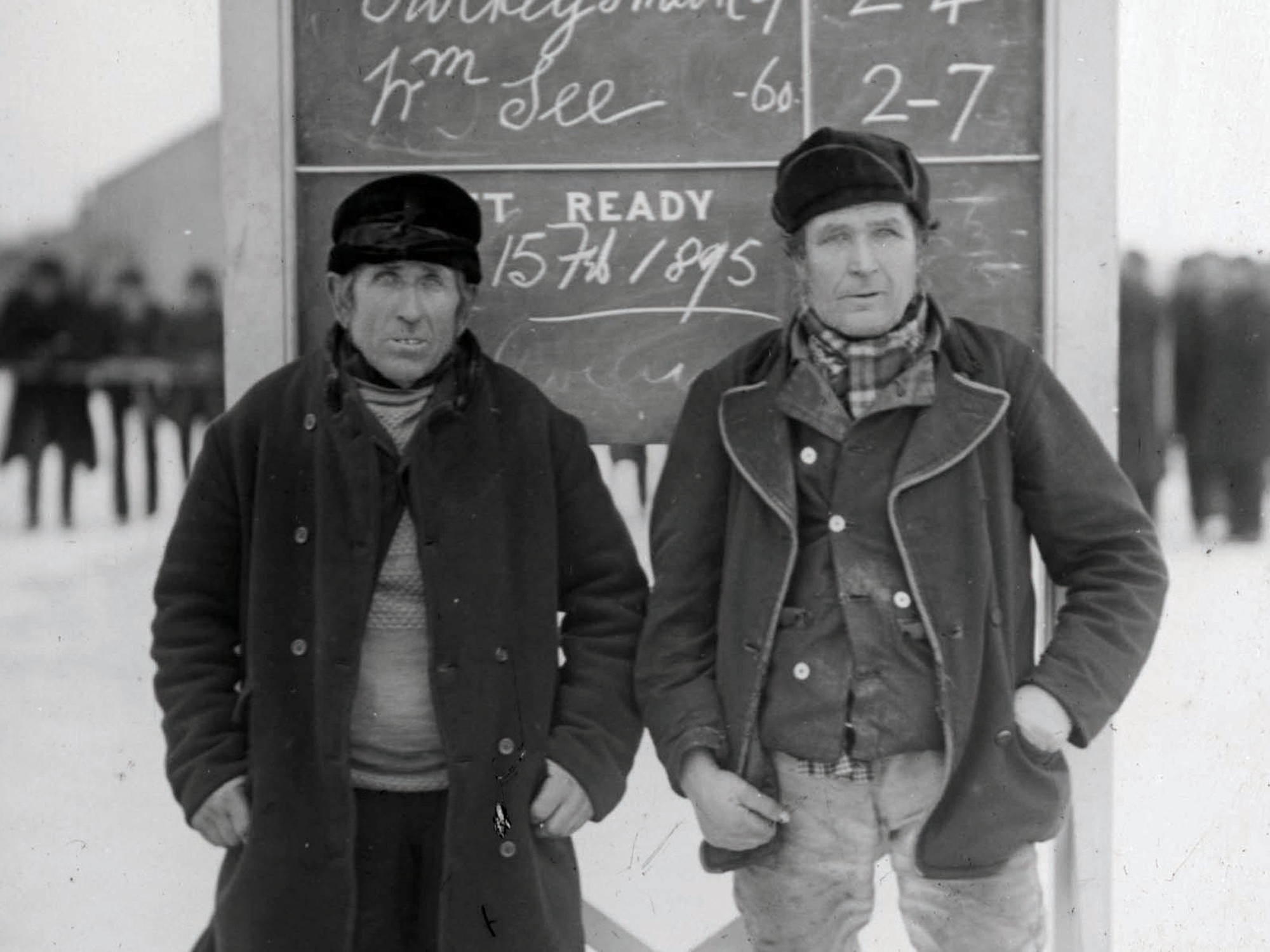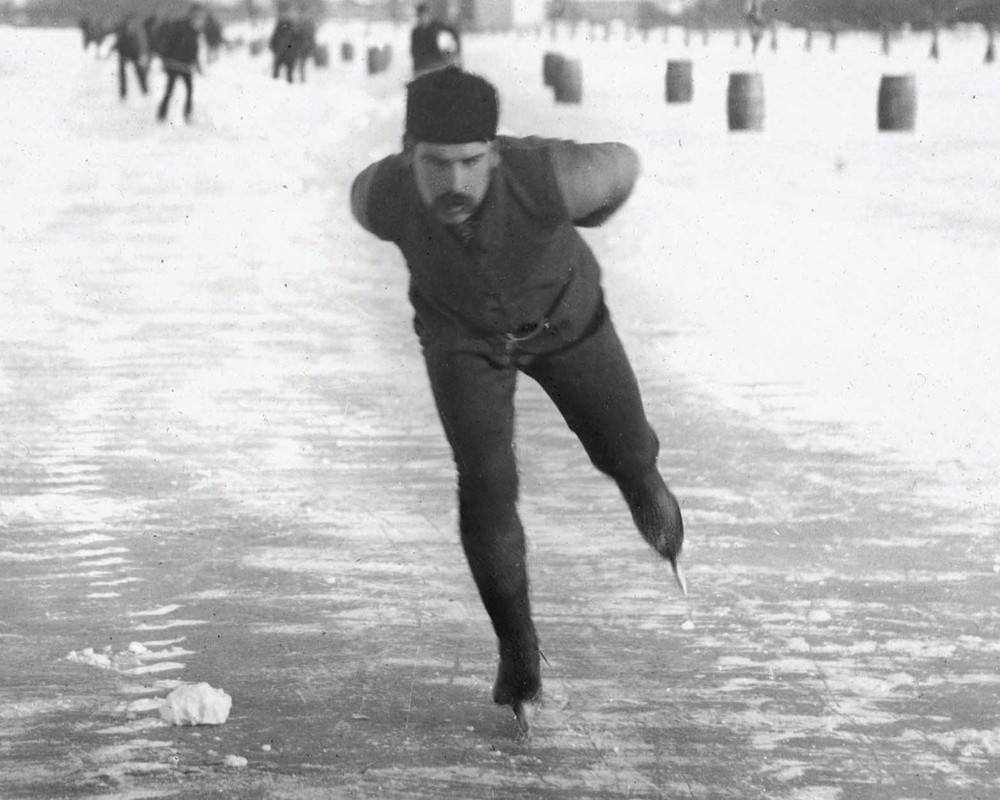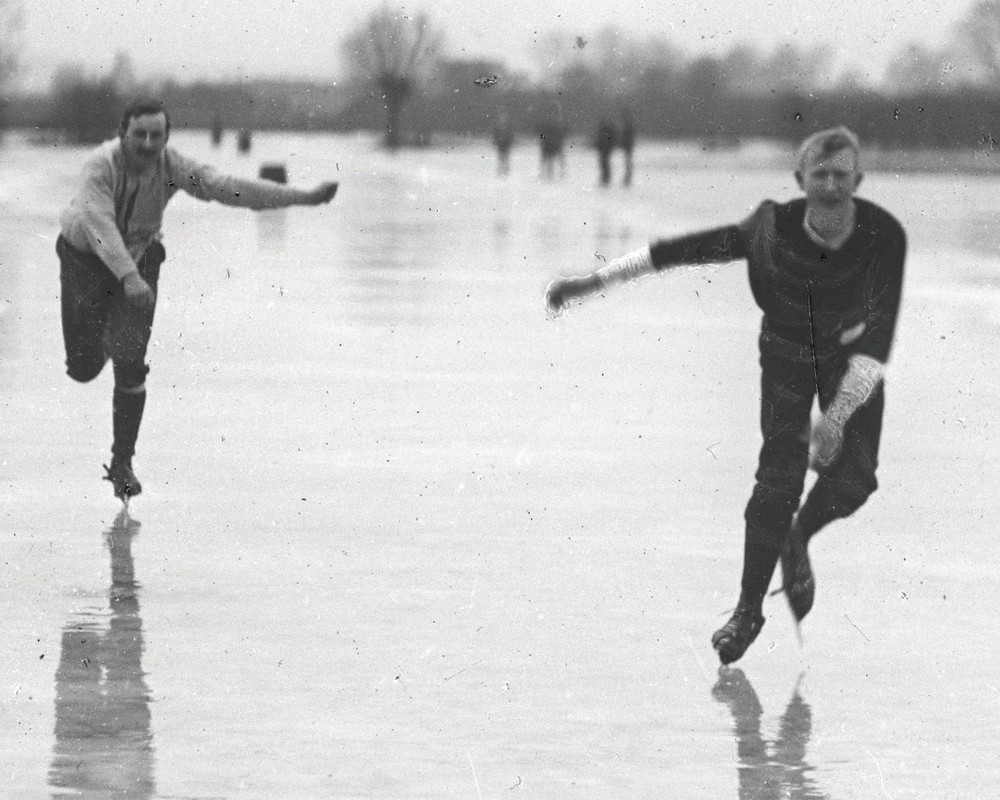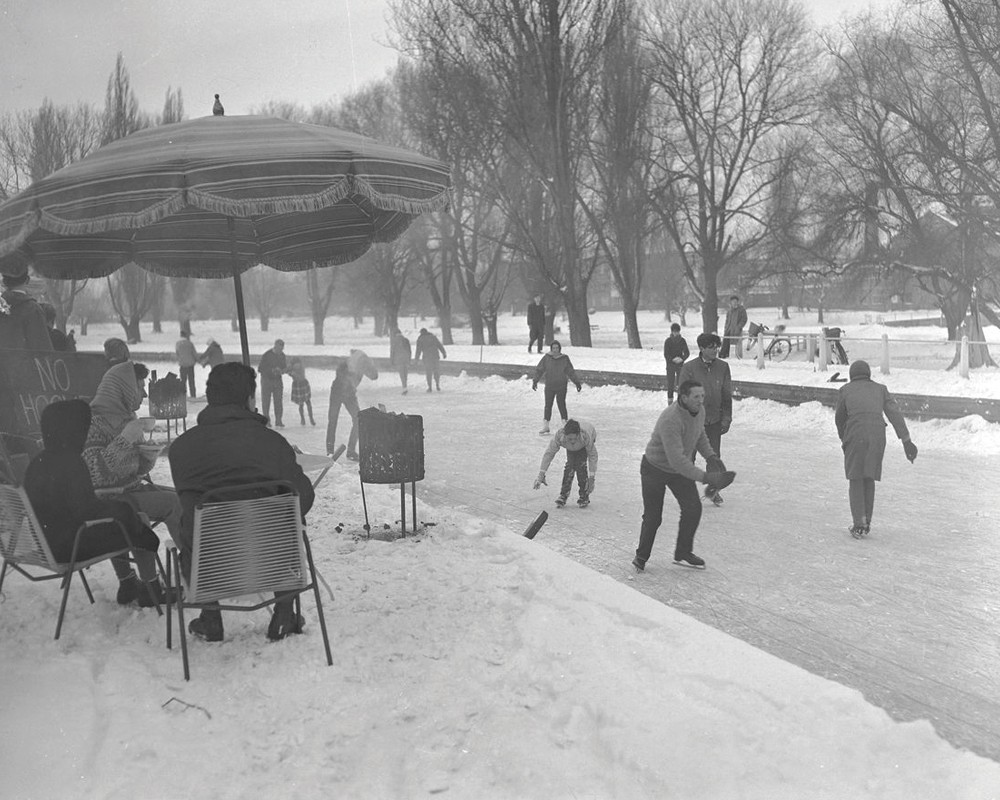
Revisiting the golden age of Fen skating
Over winter in the mid-19th century, the Fens were home to one of the area’s most exciting and popular sports. Alison Gifford traces the history of fen skating and its colourful characters...
It’s hard to imagine now, but for many years the rivers and washes of the Fens froze hard every winter, and skaters would take to the ice for pleasure and competition. Skating over the frozen flooded fields and meadows was an eagerly-awaited part of Fenland life and a big part of the region’s heritage. When ice-skating competitions were held huge crowds travelled to watch, and during the 1890s Fen skating produced some of the world’s fastest speed skaters. There were skating families with legendary skaters such as William ‘Turkey’ Smart from Welney, his sons George ‘Flying Fish’ and James Smart, his brother-in-law William ‘Gutta Percha’ See, and his son ‘young Gutty.’ A huge amount village rivalry existed, and the village of Southery on the River Great Ouse was home to a large number of skating families - the exotically-named Larman Register was a champion skater as was his brother Robert and three of his nephews. A story is told how a group of Southery skaters challenged some railwaymen to a race from Littleport to Queen Adelaide, where the river runs alongside the railway and the skaters beat the train to the finish line.
The National Skating Association was set up in Cambridge in 1879 and took the top Fen skaters to the Netherlands, where they had a brief moment of international glory with James Smart becoming Britain’s only ever world champion speed skater.
As a recreation, as a means of transport and as a spectator sport, skating in the Fens was popular with people from all walks of life - but racing was the preserve of workers, most of them agricultural labourers.
When it was freezing, skating matches were held in towns and villages all over the Fens. In these local matches men would compete for prizes of money, clothing or food, and during severe winters joints of meat would be hung outside the village pubs to be won as skating prizes. The winners of local matches were invited to take part in the grand or championship matches when skaters from across the Fens would compete for cash prizes in front of bumper crowds.



A small-scale ice age existed from the middle ages until about 1850, and the British Isles were covered in snow and ice over winter, which was perfect for outdoor winter pursuits - particularly ice skating.
But very different types of skating emerged. For the better-off it was the more refined pastime of figure skating, but for agricultural workers of the Fens it was competitive speed skating - and the faster the better.
Originally the Fens were vast swathes of marshy land that froze during the harsh winters of the time - the shallow water caused ice to form more quickly and more regularly than it did on flowing water. The need to earn money during the winter meant the frozen water wasn’t a disaster for the labourer’s income but an opportunity.
This was no gentleman’s sport, however. The hardy Fenmen were professionals who raced on the ice for money and for them it was a job they took very seriously - the prizes could be enormous.
In 1912, newspapers reported “the weather was brilliant and the ice splendid for the Littleport Skating Club’s 50-guinea challenge cup” - 50 guineas equating to £52 and 10 shillings at a time when the average labourer’s wage was about 11 shillings a week.
Substantial betting added to the thrill of the race with the chance of a welcome winter windfall.
It’s not known when the first skating matches started, but regular mentions of racing on the ice were reported in local newspapers from 1814. From then on racing and betting on Fen races were reported nationally. But as more of the Fens were drained, the nature of the newly-formed ground reduced the possibility of finding suitable locations to run a race of 1½ miles (or longer) in a straight line or around an oval track - so the system of “out and home” races evolved, and became uniquely associated with Fen racing.
This was completely different to the river speed skating of Scandinavian countries. The course would be marked with posts or barrels around which the competitors would turn for the home run. The art of turning at speed was a distinguishing feature of Fen racing. Usually the finishing post was a man standing on a barrel and holding a broom upright in the air!
In 1902, the professional championship was won for the first time by an outsider - the Wigan lamplighter Joseph Bates. The days when Fenland agricultural labourers were masters of the ice were numbered, although the last three professional titles before 1914 were all won by Fenmen.
There were no official matches during the first World War, and Turkey Smart died in 1919, having lost five of his grandsons in the war, a whole generation of future fen skaters. A series of mild winters followed, resulting in an interval of 15 years without any championships.
The last championships were held in the winter of 1996-97, and even today local enthusiasts put on their skates when ice forms - but the golden days that saw thousands of people flocking to the ice-covered washes are long gone.
